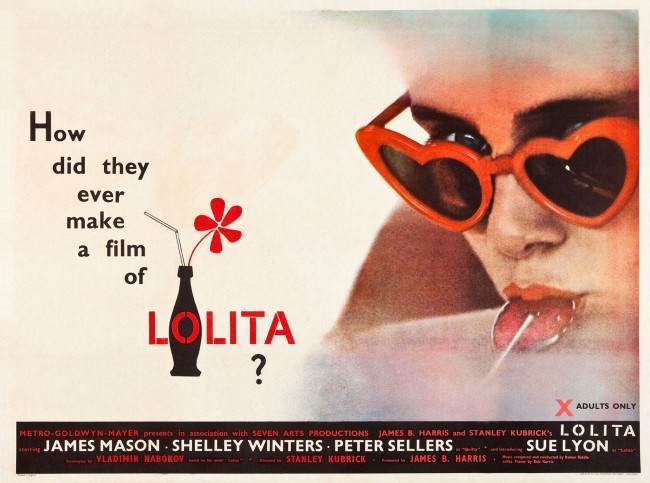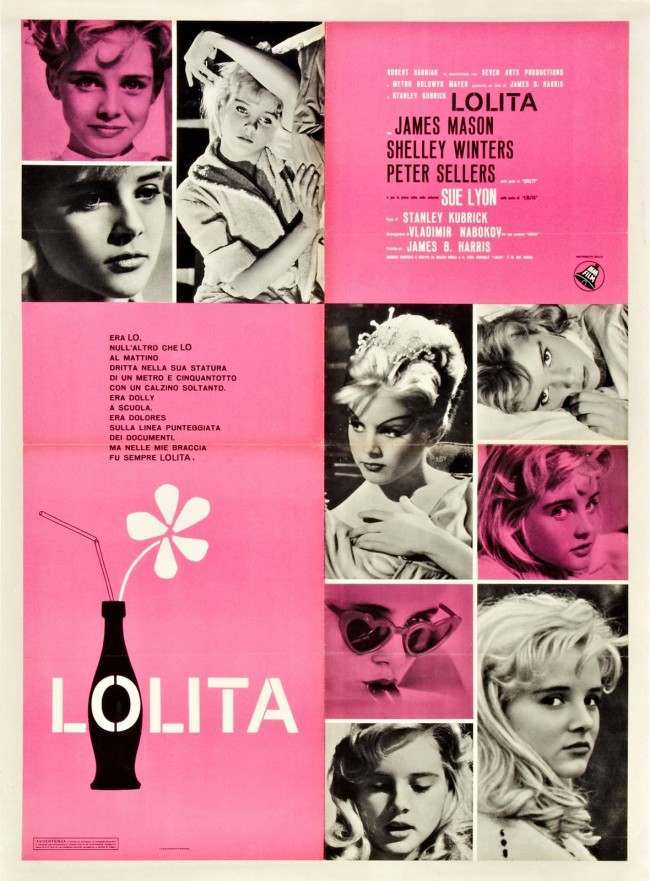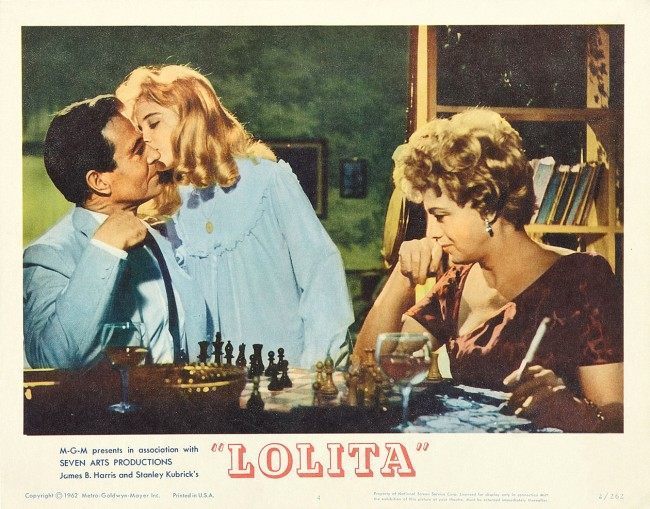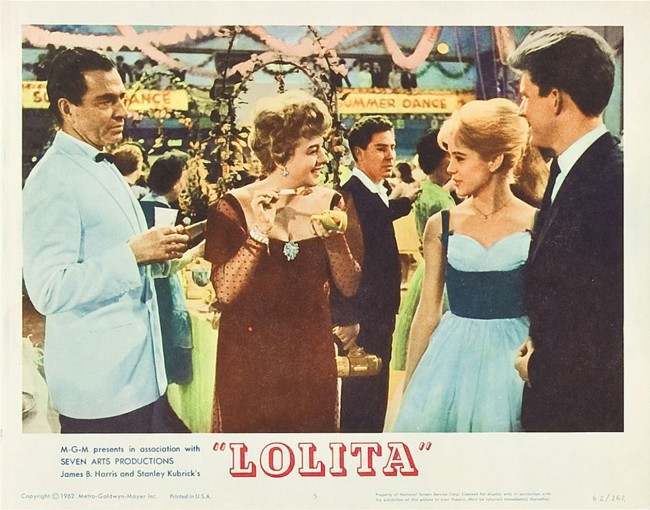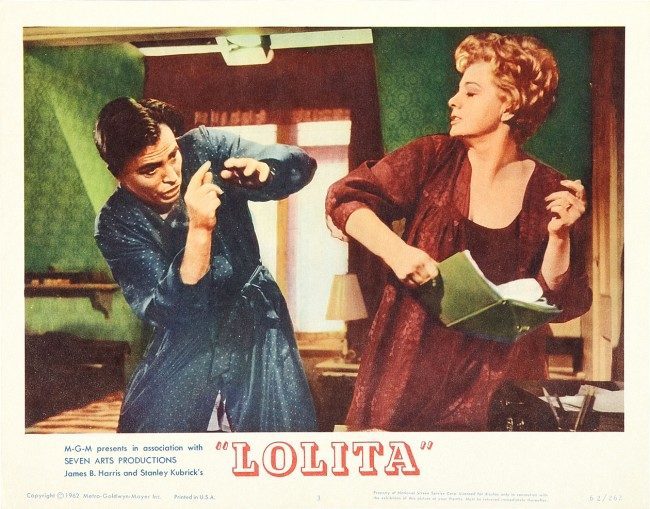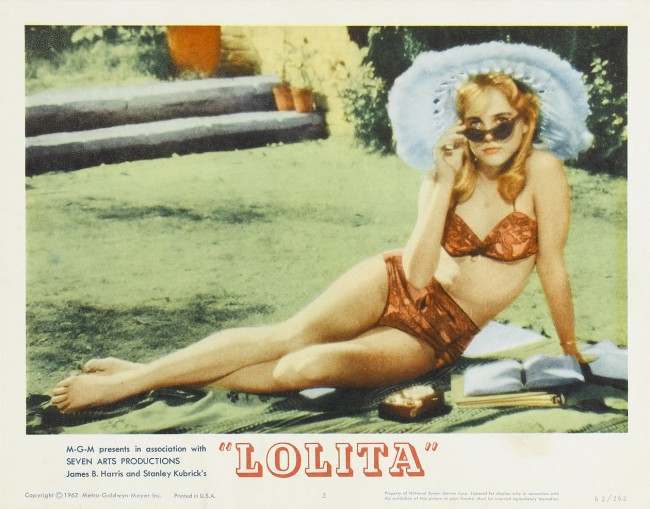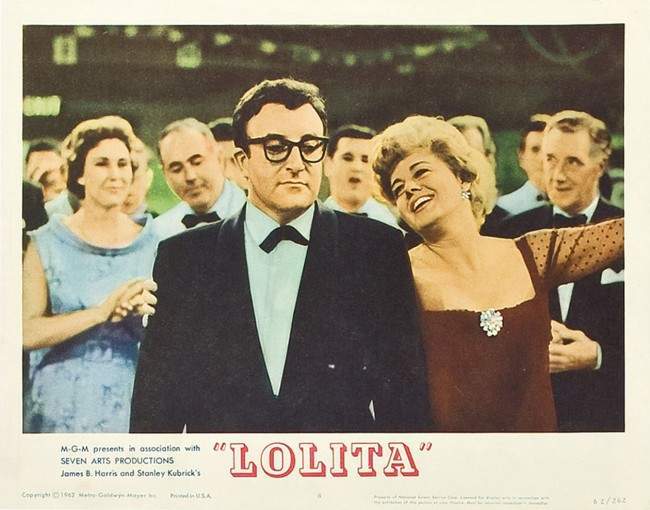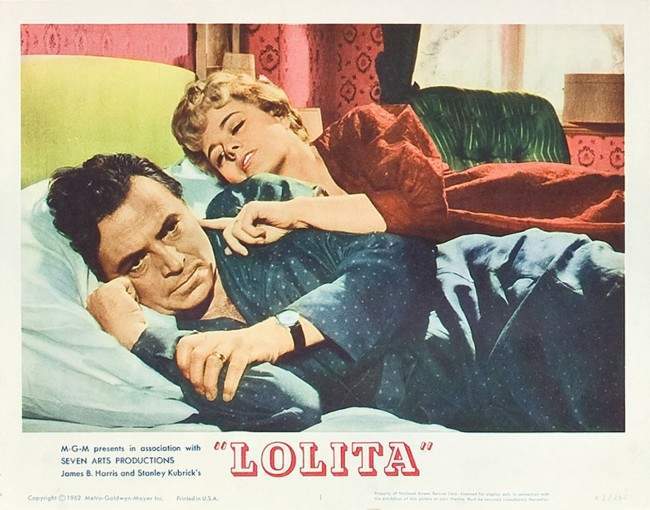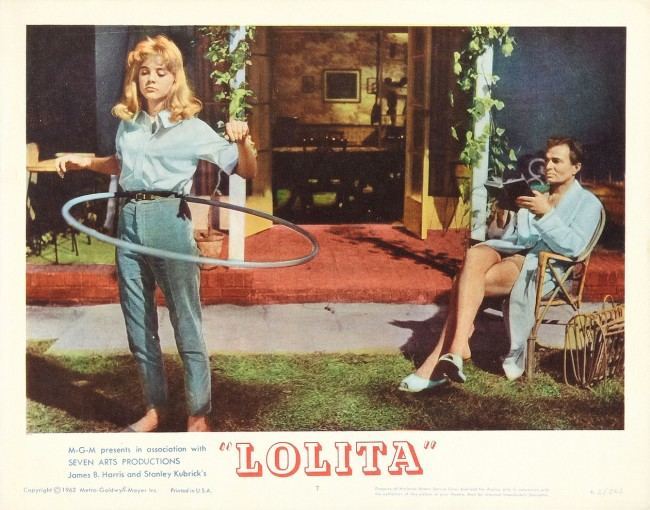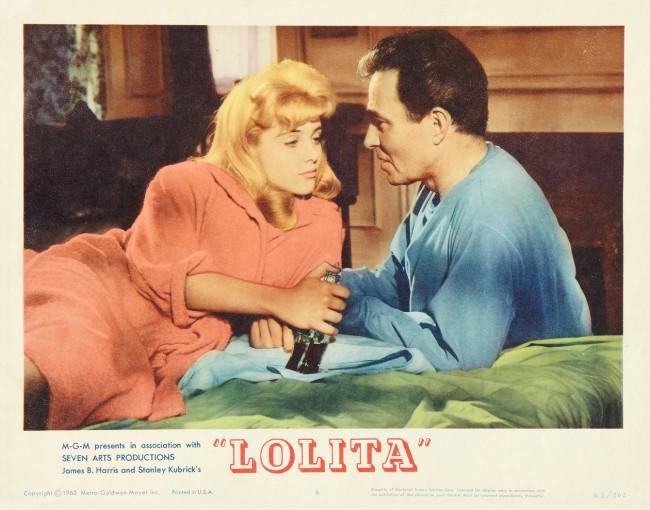In 1962, you could get hold of these Lobby CArds advertising the Stanley Kubrick’s film version of Vladimir Nabokov’s Lolita.
The book was – is – controversial. A December 1953 review of the manuscript opined:
“It is overwhelmingly nauseating, even to an enlightened Freudian. To the public, it will be revolting. It will not sell, and will do immeasurable harm to a growing reputation… I recommend that it be buried under a stone for a thousand years.”
The plot is about middle-aged Humbert Humbert’s obsession for twelve-year old Dolores Haze.
Not that the writer admired Freud:
“I think he’s crude, I think he’s medieval, and I don’t want an elderly gentleman from Vienna with an umbrella inflicting his dreams upon me. I don’t have the dreams that he discusses in his books, I don’t see umbrellas in my dreams or balloons.”).
Lolita, light of my life, fire of my loins. My sin, my soul. Lo-lee-ta: the tip of the tongue taking a trip of three steps down the palate to tap, at three, on the teeth. Lo. Lee. Ta.
Kubrick:
She was actually just the right age. Lolita was twelve and a half in the book; Sue Lyon was thirteen. I think some people had a mental picture of a nine-year-old. I would fault myself in one area of the film, however; because of all the pressure over the Production Code and the Catholic Legion of Decency at the time, I believe I didn’t sufficiently dramatize the erotic aspect of Humbert’s relationship with Lolita, and because his sexual obsession was only barely hinted at, many people guessed too quickly that Humbert was in love with Lolita. Whereas in the novel this comes as a discovery at the end, when she is no longer a nymphet but a dowdy, pregnant suburban housewife; and it’s this encounter, and his sudden realization of his love, that is one of the most poignant elements of the story. If I could do the film over again, I would have stressed the erotic component of their relationship with the same weight Nabokov did. But that is the only major area where I believe the film is susceptible to valid criticism.
Kubrick:
I discussed this approach with Nabokov at the very outset, and he liked it. One of the basic problems with the book, and with the film even in its modified form, is that the main narrative interest boils down to the question “Will Humbert get Lolita into bed?” And you find in the book that, despite the brilliant writing, the second half has a drop in narrative interest after he does. We wanted to avoid this problem in the film, and Nabokov and I agreed that if we had Humbert shoot Quilty without explanation at the beginning, then throughout the film the audience would wonder what Quilty was up to. Of course, you obviously sacrifice a great ending by opening with Quilty’s murder, but I felt it served a worthwhile purpose.
Would you like to support Flashbak?
Please consider making a donation to our site. We don't want to rely on ads to bring you the best of visual culture. You can also support us by signing up to our Mailing List. And you can also follow us on Facebook, Instagram and Twitter. For great art and culture delivered to your door, visit our shop.
